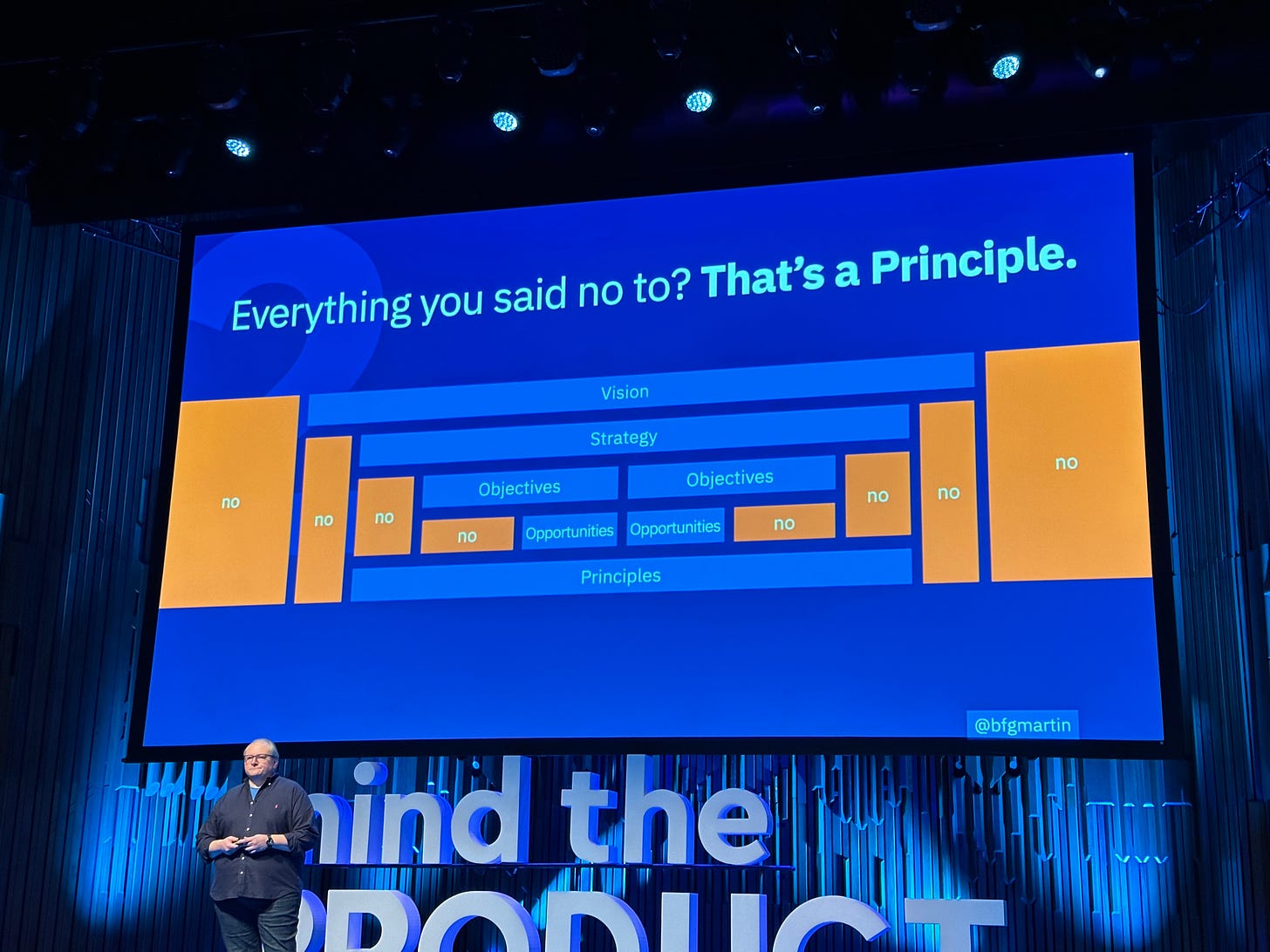🤩 Welcome to the three new Morfternighters who joined us last week.
We love to have you here, and I hope you’ll enjoy reading Morfternight.
If you do, remember to share with a friend by clicking on this button.
📷 Photo of the week

👋 Back from London
I was in London Wed/Thu/Fri this week for the first Mind the Product workshops and in-person conference since three years ago.
It was also three years since my last visit to London. It’s hard to believe how much has changed between those two trips. The UK left the EU, we all went through a global pandemic, and the British people lost their Queen. They got a King in exchange, but if I have to believe The Crown, it was a lousy deal.
🗺️ Three places to visit today
Today for a change, I’ll share three Twitter threads I found interesting over the past week.
- We start with Julie Zhuo, former Facebook’s design VP and author of “The Making of a Manager,” a book I read and recommend. She describes “Product Thinking” and how to get good at it. Simple but effective list.
- I had never heard of Warren Craddock until this tweet. Still, I found his tale of fatal product flaws that everybody knew about, no one discussed, and eventually killed the product fascinating. A testament to building a culture of psychological safety where people feel comfortable mentioning that the king isn’t wearing any clothes.
- Finally, Daniel Doyon, co-founder of Readwise, the app I use daily to organize everything I read online, explains the notion of Carrying Capacity for SaaS businesses. In other words, the size of the customer base where your churn and acquisition balance each other.
📝 Mind the Product London 2022 quick review
Here are a few notes from the three keynotes I enjoyed the most at the MTP conference on Friday. The video recordings are not available yet. I’ll try to remember and link to them when they become public.
Make better decisions faster, by Martin Eriksson.
In a nutshell, Strategy helps make decisions, and Principles reduce the number of options. If one keeps Strategy and Principles in sync, decisions become more manageable.

You can find more about these ideas on Martin’s site: The decision stack.
The F words of highly successful product organizations, Saielle DaSilva
By far the best keynote of the day, hard to summarize in text, that’s one you’ll have to watch.
The five F words, though, are:
- Feelings
- People who give a fuck have to reckon with feelings.
- Trust is a feeling.
- Seek disgruntled people as they care and complain.
- That’s how you learn what’s really going on.
- Focus
- Feelings impact your focus.
- We are addicted to being busy because it feels good.
- Focus is what we say is important and how we make space for it.
- Focus requires making trade-offs, which leads to friction.
- Friction
- If you don’t make room for friction, you don’t have alignment; you have coercion.
- Hidden friction is unhealthy friction.
- You don’t get rid of friction. You push it into hiding.
- Which leads to politics.
- Healthy friction comes from a culture of respect.
- Healthy friction can only occur between equals.
- Healthy friction does not always mean debate.

- Facilitation
- Make room for people to structure their input.
- You are allowed to set boundaries, but do not protect your backlog from other people’s input.
- Facilitation is undervalued. It’s taken for granted because it’s emotional labor often taken for granted.
- Give a Fuck
- Everyone cares about something.
- Life’s too short to build shitty products.
You can learn more about Saielle on the site Blossomat.work
Keeping product creative, innovative… and fun, Manon Dave
An inspirational personal story that is hard to transcribe through notes. He introduced us to an interesting concept, Slow Motion Multi-Tasking, best described by Tim Harford in his Ted talk on the subject.
Interestingly, Harford mentions Richard Feynman in his talk. The same Richard Feynman I referred to a few times in Morfternight and whose “12 Problems” method is taught by Tiago Forte in Building a Second Brain.
Worlds are colliding.
Richard Feynman was fond of giving the following advice on how to be a genius. You have to keep a dozen of your favorite problems constantly present in your mind, although by and large they will lay in a dormant state. Every time you hear or read a new trick or a new result, test it against each of your twelve problems to see whether it helps. Every once in a while there will be a hit, and people will say, “How did he do it? He must be a genius!”
You can discover more on Manon Dave from his linktr.ee
Leave a Reply